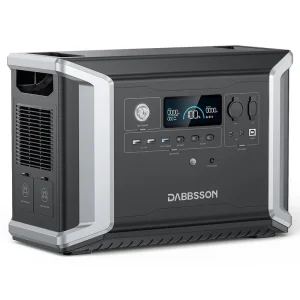The battery powered generator works by converting electricity into stored electrical energy from batteries, and using it in different devices. Normally these generators come equipped with a battery bank of between 100 amp hours to over 300 amp hours giving them significant energy reserves. So for example, considering a standard 200 amp-hour generator can theoretically deliver either 200 amps for one hour or 100 amps for two hours depending on the load.
Voltage from the batteries will be turned via an inverter from direct current (DC) to alternating current (AC), which is the type of electricity best suited for most household appliances. Inverts are critically important for controlling power output and maintaining voltage and frequency at levels close to 120 volts and 60 hertz typically used in North America. As nots industry analysts have pointed out, modern inverters can be up to 90% efficient so the proportion of energy stored in this way isn't lost on wasteful conversion.
In the past, battery gensets have been popular during natural disasters like hurricanes because traditional power becomes unreliable. More than 40% of households impacted by hurricanes reported using portable power solutions during recovery*, according to the National Hurricane Center. This use of battery-powered generators is an example of their usefulness for emergency preparedness.

Entrepreneur Mark Cuban once said, Innovation is the only way out. This can often hold legitimate for battery technological innovation, which has seasoned fast maturation in the current several years. For instance, Lithium-ion batteries have now become the norm for these systems as they have a higher energy density and life-cycle than their predecessors of traditional-air. While the upfront cost of a lithium-ion battery may be higher, they offer better long-term value by providing more than 2,000 charge cycles per battery compared to about 500 for their lead-acid counterparts.
It is important for users to know the amount of power a battery powered generator can provide. Locations provide 1,000 to 3,000 watts — perfect for keeping the lights on and the essential goods frozen during power outages. Battery generators will need to match the power requirements of each device, and this is well worth considering. Waste written by: oscached To know more, please visits battery powered generator.